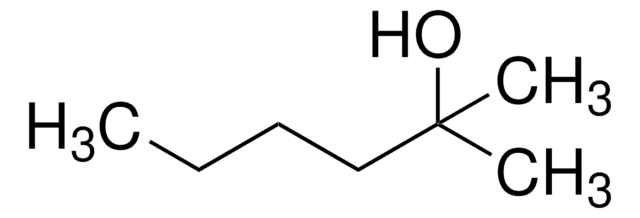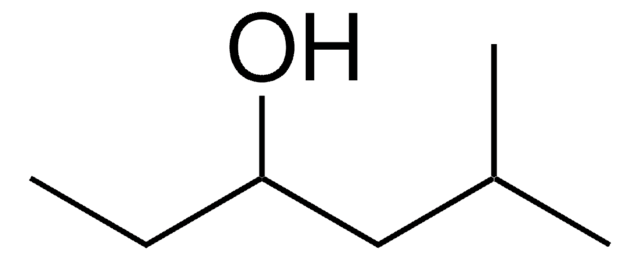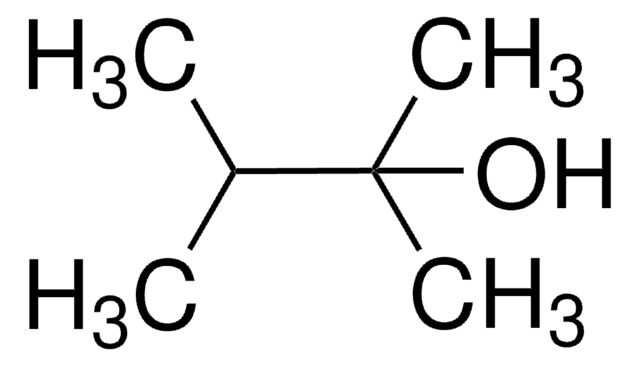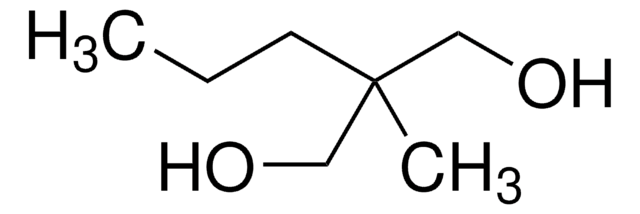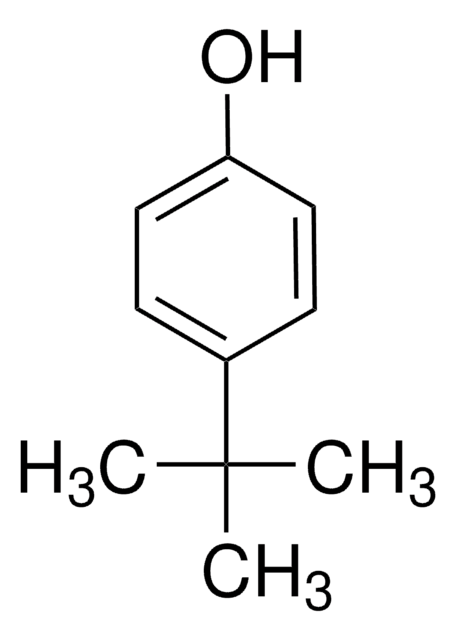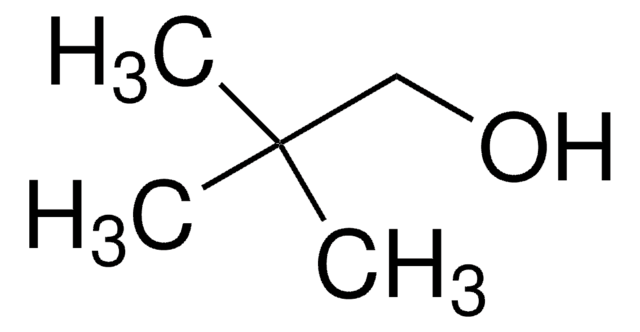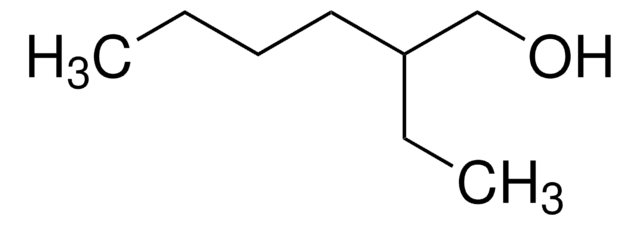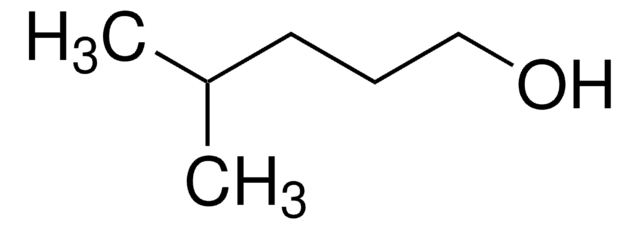189731
5-Methyl-2-hexanol
98%
Iniciar sesiónpara Ver la Fijación de precios por contrato y de la organización
About This Item
Fórmula lineal:
(CH3)2CHCH2CH2CHOHCH3
Número de CAS:
Peso molecular:
116.20
Beilstein:
1731619
Número CE:
Número MDL:
Código UNSPSC:
12352100
ID de la sustancia en PubChem:
NACRES:
NA.22
Productos recomendados
Nivel de calidad
Ensayo
98%
Formulario
liquid
índice de refracción
n20/D 1.417 (lit.)
bp
148-150 °C (lit.)
densidad
0.819 g/mL at 25 °C (lit.)
grupo funcional
hydroxyl
cadena SMILES
CC(C)CCC(C)O
InChI
1S/C7H16O/c1-6(2)4-5-7(3)8/h6-8H,4-5H2,1-3H3
Clave InChI
ZDVJGWXFXGJSIU-UHFFFAOYSA-N
¿Está buscando productos similares? Visita Guía de comparación de productos
Categorías relacionadas
Descripción general
5-Methyl-2-hexanol is a non-crystallizable secondary alcohol and its complex relative permittivity has been measured over wide range of temperatures and pressures.
Aplicación
5-Methyl-2-hexanol has been used as internal standard for rapid extraction of aroma compounds from grape brandies and aqueous-alcoholic wood extracts by ultrasound.
Palabra de señalización
Warning
Frases de peligro
Clasificaciones de peligro
Flam. Liq. 3
Código de clase de almacenamiento
3 - Flammable liquids
Clase de riesgo para el agua (WGK)
WGK 3
Punto de inflamabilidad (°F)
86.0 °F - closed cup
Punto de inflamabilidad (°C)
30 °C - closed cup
Equipo de protección personal
Eyeshields, Faceshields, Gloves, type ABEK (EN14387) respirator filter
Elija entre una de las versiones más recientes:
¿Ya tiene este producto?
Encuentre la documentación para los productos que ha comprado recientemente en la Biblioteca de documentos.
Los clientes también vieron
Lee Wei Lim et al.
Scientific reports, 6, 37568-37568 (2016-11-22)
Tetratricopeptide repeat domain 9A (TTC9A) expression is abundantly expressed in the brain. Previous studies in TTC9A knockout (TTC9A
S Pawlus et al.
The Journal of chemical physics, 135(8), 084507-084507 (2011-09-08)
The complex relative permittivity of a non-crystallizable secondary alcohol, 5-methyl-2-hexanol, is measured over a wide range of temperatures and pressures up to 1750 MPa (17.5 kbar). The data at atmospheric pressure (P = 0.101 MPa) are analyzed in terms of
Improved method for extraction of aroma compounds in aged brandies and aqueous alcoholic wood extracts using ultrasound.
Caldeira I, et al.
Analytica Chimica Acta, 513(1), 125-134 (2004)
Li Guan et al.
Brain research bulletin, 157, 162-168 (2020-02-15)
The involvement of tetratricopeptide repeat domain 9A (TTC9A) deficiency in anxiety-like responses and behavioral despair through estradiol action on the serotonergic system has been reported. Emerging evidence suggests that estradiol is a potent modulator of neuroplasticity. As estradiol and neuroplasticity
J Granja-Soares et al.
Food chemistry, 333, 127450-127450 (2020-07-15)
The aged wine spirit is a beverage with great aromatic complexity. Their volatile compounds with odorant power coming from the distillate and from the wood used in its ageing, and the interactions that take place in the process, enhanced by
Nuestro equipo de científicos tiene experiencia en todas las áreas de investigación: Ciencias de la vida, Ciencia de los materiales, Síntesis química, Cromatografía, Analítica y muchas otras.
Póngase en contacto con el Servicio técnico